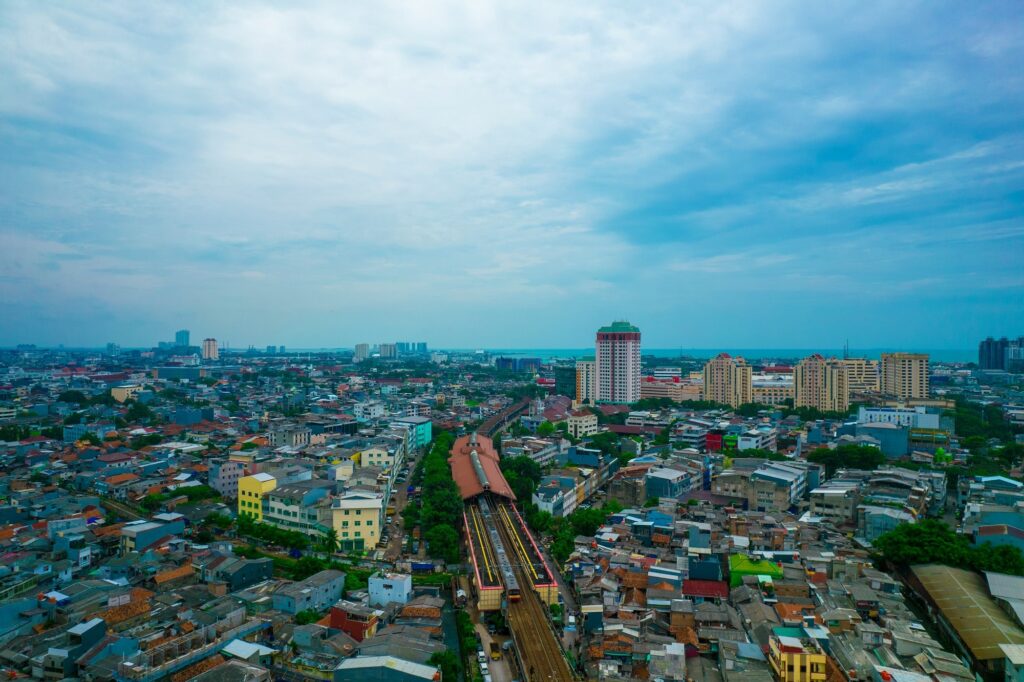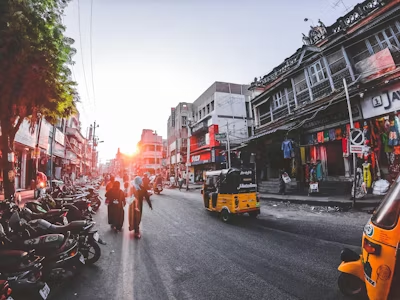
In a significant development for India’s naval capabilities, France has offered advanced pumpjet propulsion technology for the country’s next-generation diesel-electric and nuclear-powered attack submarines. This technology, already operational in the French Barracuda-class submarines, is renowned for its stealth capabilities. Pumpjet propulsion systems are known for their reduced acoustic signature compared to traditional propeller systems. By adopting this technology, India’s submarines would gain a significant advantage in underwater operations, enhancing their stealth and maneuverability. This would enable the Indian Navy to operate more discreetly in the Indian Ocean region. The potential acquisition of this technology underscores the growing defense partnership between India and France. The two nations have been actively collaborating on various defense projects, including joint military exercises and co-development of military hardware. This move by France highlights the increasing importance of advanced submarine technology in modern naval warfare. By equipping its submarines with cutting-edge propulsion systems, India aims to strengthen its naval forces and safeguard its maritime interests.

Topsoe, a leading global technology provider for the energy industry, has been selected by Hygenco to provide its dynamic ammonia technology for the latter’s green ammonia project in Gopalpur, Odisha, India. The project, which is expected to be operational by 2027, will have an initial capacity of 750 tonnes per day. Topsoe’s technology will enable the plant to adapt to fluctuations in renewable energy supply, ensuring a reliable and sustainable production process. Green ammonia, produced using renewable energy, is a promising solution for decarbonizing various industries, including shipping, power generation, and fertilizer production. By utilizing green ammonia, Hygenco aims to reduce greenhouse gas emissions and contribute to a cleaner energy future. “We are excited to partner with Hygenco on this important project,” said Elena Scaltritti, Chief Commercial Officer at Topsoe. “This collaboration will help accelerate the adoption of green ammonia as a sustainable fuel and energy carrier.” Hygenco’s ambitious plan to invest USD 2.5 billion in green hydrogen projects in India highlights the country’s growing commitment to renewable energy and decarbonization. The company’s partnership with Topsoe will leverage the Danish company’s expertise in green ammonia technology to deliver a successful project.

BP, in partnership with other stakeholders in the Tangguh Production Sharing Contract, has made a significant investment of $7 billion in the Tangguh Ubadari, CCUS, and Compression (UCC) project in Papua Barat, Indonesia. This groundbreaking project signifies a major step forward in Indonesia’s energy transition and highlights BP’s commitment to sustainable energy solutions. The Tangguh UCC project will leverage existing infrastructure at BP’s Tangguh LNG facility, enhancing its liquefaction capacity to 11.4 million tonnes per annum. By incorporating cutting-edge CCUS technology, the project aims to sequester 15 million tonnes of CO2 emissions during its initial phase, while simultaneously boosting gas production efficiency. “This project not only unlocks a fantastic gas resource, it also represents an Indonesian first through the use of CCUS to maximize gas recovery. BP has operated in Indonesia for more than fifty-five years, and the strength of our relationships enables us to bring deep technical experience in helping to deliver this innovative development. We deeply appreciate the continued support of the Government of Indonesia and partners and look forward to helping the region meet its growing energy needs,” said Murray Auchincloss, BP CEO. The Tangguh UCC project reinforces BP’s long-standing commitment to Indonesia, where the company has…

BP has reached a significant milestone by making a final investment decision (FID) for the Tangguh Ubadari, CCUS (Carbon Capture, Utilization, and Storage) project in Indonesia. This decision marks a major step towards reducing greenhouse gas emissions and advancing the global energy transition. The project, which is expected to unlock approximately 3 trillion cubic feet of additional gas resources, involves extending the gas feed to BP’s existing Tangguh LNG facility through the development of the Ubadari gas field. The project is scheduled to commence production in 2028. Once completed, the Tangguh EGR/CCUS project will feature three injection wells, an offshore injection platform, and onshore facilities for CO2 removal, processing, and compression. The initial phase of the project aims to sequester around 15 million tonnes of CO2, with the potential for further expansion given the region’s significant CO2 storage capacity. “This project not only unlocks a fantastic gas resource,it also represents an Indonesian first through the use of CCUS to maximise gas recovery. BP has operated in Indonesia for more than fifty-five years, and the strength of our relationships enables us to bring deep technical experience in helping to deliver this innovative development. We deeply appreciate the continued support of the…

Despite Cambodia’s ambitious plans for a massive canal project linking the Mekong River to the Gulf of Thailand, questions remain about China’s financial commitment to the project. The Funan Techo Canal, estimated to cost $1.7 billion, has been touted as a strategic infrastructure project for Cambodia. However, recent reports suggest that China may be hesitant to provide the 49% funding it had initially indicated. While China has expressed support for Cambodia’s development and the two nations share a strong diplomatic relationship, concerns about the project’s feasibility and potential environmental impact have raised doubts about its financial backing. The project’s viability hinges on China’s commitment, as its funding would be crucial for its successful implementation. Any delay or reduction in Chinese investment could significantly impact the project’s timeline and scope. This uncertainty highlights the evolving dynamics of China’s foreign investment strategy, particularly in Southeast Asia. As China faces domestic economic challenges, it may be reassessing its overseas investments and prioritizing projects with higher returns. The future of the Funan Techo Canal remains uncertain, and its potential impact on Cambodia’s economy and environment will be closely watched by regional and global observers.

Pan Asia Metals has announced a significant expansion of its landholding at the Rosario copper project in the Atacama region of northern Chile. The company has submitted 26 exploration concession applications covering approximately 61 square kilometers, which, upon approval, will increase the project’s total landholding to 86 square kilometers. This strategic move aims to capitalize on the project’s significant exploration potential and secure critical infrastructure corridors for future development. The new concession areas are strategically located along the northern strike extensions of the Rosario Central and Rosario West trends, which are considered highly prospective for mineralization. Pan Asia Metals believes that these areas, which are currently covered by gravel, have the potential to host significant copper mineralization, particularly where cross-cutting structures intersect the main geological trends. Pan Asia Metals managing director Paul Lock said: “The new application areas capture important geology as well as corridors and zones for future energy needs, and large areas of deep alluvial gravels with potential for water. Aside from the additional prospective geology, these concession applications mitigate the time and cost risk to secure these zones at a later date, when your neighbours know you need it.” The company is committed to responsible mining practices…

A proposed tungsten mining project in Madurai, India, has drawn criticism from activists, environmentalists, and local communities. The project, which would span over 5,000 acres in the Nayakkarapatti area of Melur taluk, has raised concerns about its potential impact on the environment and historical sites. Opponents of the project worry about the potential for deforestation, water pollution, and air quality degradation. They also express concern about the proximity of the proposed mining site to the Alagar hills, a biodiversity heritage site and a place of cultural significance. Madurai MP, Su Venkatesan, has voiced his objections to the project, questioning how the central government can clear a project near eco-sensitive and historic areas while being slow to approve archaeological projects. He urged the state government to reject the project, citing potential damage to natural resources and historical evidence. The project, awarded to Hindustan Zinc Limited, a subsidiary of the Vedanta Group, has yet to receive final approval. The debate surrounding the project highlights the ongoing tension between economic development and environmental protection in India.

Copenhagen Offshore Partners (COP) has announced a significant milestone in the development of the 96MW Jeonnam 1 Offshore Wind Project in Korea. The project has achieved first power, marking a crucial step towards Korea’s energy independence and net-zero goals. COP, in partnership with CIP (Copenhagen Infrastructure Partners) and SK Innovation E&S, has been instrumental in driving the development of the Jeonnam 1 project. As the exclusive offshore wind development partner for CIP, COP has led the project from inception to construction, working closely with local communities and stakeholders to ensure its successful implementation. Construction on Jeonnam 1 commenced in early 2023, with turbine installation beginning in September 2024. The project is expected to reach full commercial operation in the first quarter of 2025, generating clean energy for approximately 60,000 households. Jesper Krarup Holst, COP Partner, Head of APAC, and Chief Operating Officer of the Jeonnam 1, 2, and 3 portfolio, expressed his satisfaction with the project’s progress and thanked the team for their hard work and dedication. COP is actively involved in developing a multi-gigawatt offshore wind portfolio in Korea, including the Jeonnam 2 and Jeonnam 3 projects, as well as the 1.5 GW Haewoori floating offshore wind project. These…

China Energy Investment Corp (CHN Energy) has made significant strides in its renewable energy initiatives, successfully connecting a 3-GW solar power plant and a 1-GW offshore photovoltaic park to the Chinese grid. The 3-GW Mengxi Blue Ocean Photovoltaic Power Station, built on a former coal mining site in Inner Mongolia, is now fully operational. This massive solar power plant, comprising 5.9 million solar panels, is expected to generate 5.7 billion kWh of clean electricity annually, powering approximately 2 million households. By utilizing a previously mined area, the project demonstrates a commitment to sustainable development and land reclamation. In another groundbreaking achievement, CHN Energy has switched on the first batch of photovoltaic units at a 1-GW offshore solar park in Kenli District, eastern China. This pioneering project, the world’s largest offshore solar plant, covers an area of approximately 1,223 hectares and will generate 1.78 billion kWh of clean electricity annually. Both projects are expected to significantly reduce carbon emissions and contribute to China’s renewable energy goals. By harnessing the power of solar energy, CHN Energy is leading the way in the transition to a low-carbon future.

The Food and Agriculture Organization of the United Nations (FAO) has launched a new project in Lao PDR aimed at preventing and detecting zoonotic diseases. The two-year, €2 million initiative, funded by the European Union, is part of the global Sustainable Wildlife Management (SWM) Program. The project will focus on reducing the risk of zoonotic diseases through community-driven sustainable wildlife management and the application of the One Health approach. This integrated approach recognizes the interconnectedness of human, animal, and environmental health. In Lao PDR, wild meat harvesting is a common practice, often driven by food security and livelihood needs. However, unsustainable hunting practices can contribute to biodiversity loss and increase the risk of zoonotic disease transmission. FAO, in collaboration with the Lao PDR’s Ministry of Agriculture and Forestry, CIRAD, and WCS, will work to assess the role of wild meat in rural livelihoods and identify potential zoonotic disease risks. The project will also establish community-based surveillance networks to detect and respond to potential disease outbreaks. By strengthening legal and institutional frameworks, the project aims to promote sustainable wildlife management and the One Health approach in Lao PDR. This initiative is part of the broader SWM Program, which is being implemented…










